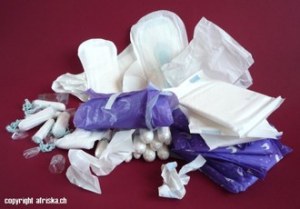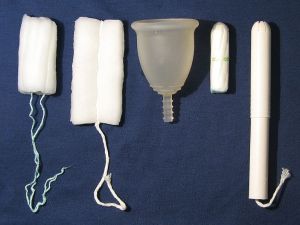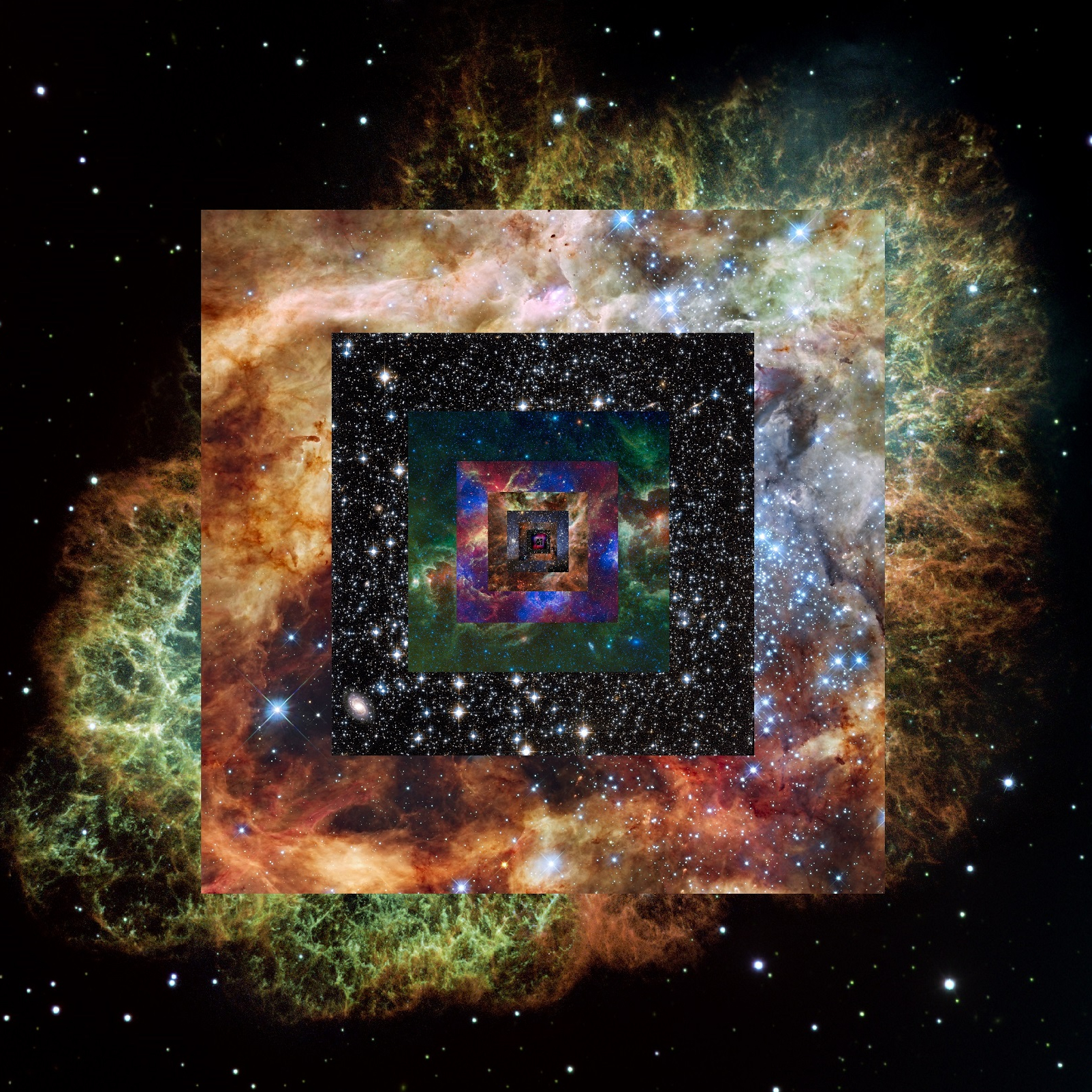
The menstrual cycle is something that every woman becomes familiar with during her lifetime. How each woman deals with it is a personal choice, but not one that goes without major consequences on both her health and the environment. The common Western way to handle a period often involves tampons and pads. There is another option, however, that you may have never heard of. Something that is becoming increasingly popular due to both the health benefits and positive environmental effects is a device called a menstrual cup. The Mayo Clinic‘s Mary M. Gallenberg, M.D tells us that
A menstrual cup is a bell-shaped device worn inside the vagina during menstruation to collect menstrual fluid. Menstrual cups provide a viable alternative to pads and tampons. Menstrual cups are typically made of silicone or other nonlatex materials.
*Note: This article will specifically address why menstrual cups are a good alternative to traditional tampons and will not discuss sanitary napkins in depth as the internal use of tampons and menstrual cups makes them more comparable in manner than menstrual cups and sanitary napkins.
[no_toc]
Health Effects
To better understand the health benefits of menstrual cups, it’s important to understand the health effects of tampons. To fully grasp this let’s take a look at what tampons are made of, and how they’re produced. Remember that all of these items are inserted into the body and held internally for extended periods (4-8 hours) for about a week every month.
Material Production
According to Wikipedia:
The majority of tampons sold are made of rayon, or a blend of rayon and cotton. Organic cotton tampons are made from only 100% cotton.
Rayon is a semi-synthetic fiber manufactured mostly from wood pulp using a chemical process. The production process of rayon might make a person second guess the use of this fiber internally, but what’s wrong with cotton? According to the Organic Trade Association:
Cotton is considered the world’s ‘dirtiest’ crop due to its heavy use of insecticides, the most hazardous pesticide to human and animal health. Cotton covers 2.5% of the world’s cultivated land yet uses 16% of the world’s insecticides, more than any other single major crop (1). Aldicarb, parathion, and methamidopho, three of the most acutely hazardous insecticides to human health as determined by the World Health Organization, rank in the top ten most commonly used in cotton production. All but one of the remaining seven most commonly used are classified as moderately to highly hazardous (1). Aldicarb, cotton’s second best selling insecticide and most acutely poisonous to humans, can kill a man with just one drop absorbed through the skin, yet it is still used in 25 countries and the US.
That sounds healthy.
Chemical Processing and Dioxin
After the cotton is grown and harvested it must be bleached to make it a pleasant looking bright white. In the past this process involved a chlorine gas bleaching process which produces a poison called dioxin. Kotex addresses the issue of dioxin on their website stating that,
KOTEX® tampons are bleached using Elemental Chlorine Free (ECF) processes which significantly minimize the potential for dioxin formation during bleaching. Using extremely sensitive analytical studies, independent laboratories are unable to find any dioxin created by the bleaching process in KOTEX® tampons. These tests measure amounts as low as one-half part per trillion. To put this into perspective, one part per trillion is equivalent to one drop of water in over 11 million gallons.

the-tap.blogspot.com
That doesn’t sound so bad, but according to the World Health Organization,
Once dioxins have entered the body, they endure a long time because of their chemical stability and their ability to be absorbed by fat tissue, where they are then stored in the body. Their half-life in the body is estimated to be seven to eleven years. Dioxins are highly toxic and can cause reproductive and developmental problems, damage the immune system, interfere with hormones and also cause cancer.
not to mention that,
Due to the omnipresence of dioxins, all people have background exposure, which is not expected to affect human health. However, due to the highly toxic potential of this class of compounds, efforts need to be undertaken to reduce current background exposure.
Natracare, a producer of 100% organic cotton tampons, informs us that Elemental Chlorine Free bleaching is in fact, not free of chlorine, and therefore not free of dioxin. It is simply free of the pure element of chlorine in gas form. Natracare uses a 100% totally free from chlorine bleaching process and wins my vote for best tampon out there.
Toxic Shock Syndrome
Another health risk, and one of the largest worries of tampon users, is Toxic Shock Syndrome (TSS), a type of staph infection that arises when a tampon provides a breeding ground for bacteria in the vagina during menstruation. This risk is more associated with the semi-synthetic rayon fibers than cotton, but a potential risk exists with any tampon. The Playtex website and informational insert in all Playtex packages states that,
Tampons are associated with Toxic Shock Syndrome (TSS). TSS is a rare but serious disease that may cause death. The incidence of TSS is estimated to be between 1 and 17 cases of TSS per 100,000 menstruating women and girls per year.
Some might argue that this means TSS is rare, but let’s take a closer look. The US Census reports that in 2011 there were approximately 72,677,000 women between the ages of 15 and 49 alive in the United States. I will make what I believe to be a modest estimate and say that a quarter of this population uses tampons to help with her menstrual cycle, which comes to 18,169,250 women using tampons. So, if 1-17 out of every 100,000 will get TSS, my calculations conclude that between 181 and 3,088 women in the United States will get TSS every year. The CDC does not require TSS infections to be reported so the data concerning infections is not complete. Menstrual cup producer Lunette urges people to,
Keep in mind that it is scientifically proven that menstrual cups don’t change the composition of blood during the time the cup is kept inside the vagina. There are no reported cases of TSS in connection with use of menstrual cups since the cups were invented in the 1930’s. The Lunette menstrual cups hold 25 ml (size 1) or 30 ml (size 2). As a comparison, a tampon that absorbs this amount (25 to 30 grams) is dangerous and even illegal in some countries, because of the risk of TSS.
Related Article: Natural, Living Pesticides TSS is a serious disease related to tampons, but according to Natracare a Canadian study found no connection to 100% all cotton tampons and TSS. While one study isn’t conclusive it’s a good sign for all cotton, organic tampons.
Dryness and Tearing
Although TSS is the most significant health risk associated with tampon use, it’s not the only disadvantage. Tampons absorb fluid from the vagina, disrupting the delicate vaginal ecosystem. The dryness associated with tampon use causes vaginal health problems. Inserting and removing tampons with no lubrication can cause tears and rips in the vaginal wall leading to increased risks of infection and diminished health. Vaginal discharge is the body’s way of cleaning and protecting the vagina. The Mayo Clinic links “inadequate vaginal lubrication” as a cause of vaginal yeast infections. WEB MD says that:
A tampon inside a dry vagina can cause significant irritation as well as microscopic tears in the skin. The irritation and tears can later open the door to infection.
Menstrual cups leave the vaginal ecosystem intact and don’t alter the environment. Many menstrual cups are made of medical grade silicone and their role is to collect the menstrual blood, not absorb it. This difference creates a healthier environment in the vagina, allowing the vagina to continue protecting itself.
Environmental Benefits
 Most commercial tampons and pads are one time purchase and use items. This means that every menstrual cycle a female has is a burden to the environment. All of the tampons and pads she uses head straight to the landfill and take years to decompose, all the while leaching dioxin and pesticides into the ground. The Chic Ecologist says that
Most commercial tampons and pads are one time purchase and use items. This means that every menstrual cycle a female has is a burden to the environment. All of the tampons and pads she uses head straight to the landfill and take years to decompose, all the while leaching dioxin and pesticides into the ground. The Chic Ecologist says that
A typical woman can use anywhere between 8,000 to 17,000 tampons in her lifetime.
That’s a lot of tampons. In the book Flow: The Cultural Story of Menstruation Elissa Stein and Susan Kim discuss the idea of menstrual cups. This idea is discussed enthusiastically and with the same reasoning used in this article.
Think about it… at roughly thirty bucks a pop, menstrual cups can be quite the bargain! And considering that the average woman will throw away 250 to 300 pounds of pads, plugs, and applicators in her lifetime, one would also save oneself significant guilt about dumping all that waste into our already-stressed environment.
Slate magazine states in an article about greener periods that period related waste is a small percentage of total female produced waste, but let’s consider the accumulated effect of all women of menstruating age. If we take another look at the number of women in the US between the ages of 15 and 49 (approximately menstruating age) and assume that half of them are menstruating (accounting for pregnancies and other circumstances) then that leaves 36, 338,500 women menstruating and producing 250-300 pounds of menstrual garbage each, for an accumulated total of over 9 billion pounds of trash. All produced from periods. So yes, maybe looking at the total amount of trash that we as individuals produce every year makes our menstrual waste seem small, but factor in total accumulation and all women, and the number becomes very significant. For each person using a menstrual cup instead of tampons and pads, the environment is benefited by having that much less waste in landfills. This in itself is an instantaneous reward for the new menstrual cup user, but what if using a menstrual cup could help the environment even more? Now this part has no real science behind it that I could find, but some people claim that menstrual blood is a great fertilizer. The website Holy Hormones hearkens back to the Native Americans and their practices saying that,
There are also native tribes that would return the sacred life-giving blood back to the earth. They would sit over seeds and let the sacred blood flow directly on the seeds or on newly planted seedlings.
So even if the menstrual blood collected in the menstrual cup is not used as a fertilizer the impact on the environment through lack of landfill waste is truly something amazing.
Related Article: The “Friends of the Indian” and How They Treated Their Friends
Impact on the Budget
The average American woman can spend upwards of $1900 in her lifetime (40 years) on feminine products such as tampons and pads. Comparatively, menstrual cups cost as little as $104 for a 40 year period. This is because they are a one time purchase for up to 10 years and can cost as little as $26 each. So in addition to the significant impact these products can have on the environment and women’s health, they can also ease stress off the budget. Even if you opt for the slightly higher price menstrual cups the savings over a lifetime are significant enough. The company which produces the Keeper estimates that over a 10 year period the average woman would spend $400 on pads and tampons, whereas the cost of one Keeper is $35 for the same 10 year time span.
Related Article: The 20 Biggest Wastes of Money and How to Avoid Them
Choosing and Using a Menstrual Cup
 Everyone is different. Choosing the best menstrual cup is dependent upon one’s size. To help you choose which cup is best suited to your flow and size I suggest a visit to menstrualcup.co to view their comparison chart. I highly suggest watching an instructional video before using a menstrual cup as it can be difficult to use if not done properly. There are many different brands, the most popular being the Diva Cup, and the Moon Cup. If you’re American and want to support an American company the Keeper and the Moon cup are the only menstrual cups made in America, and they’re darn tootin’ proud of it. To answer some frequently asked questions about menstrual cups check out the Diva Cup’s FAQ list and the Moon cup’s Q&A page. You can of course read many, many testimonials all over the internet, but I’ll give you my own personal experience below (I sincerely hope it’s not TMI).
Everyone is different. Choosing the best menstrual cup is dependent upon one’s size. To help you choose which cup is best suited to your flow and size I suggest a visit to menstrualcup.co to view their comparison chart. I highly suggest watching an instructional video before using a menstrual cup as it can be difficult to use if not done properly. There are many different brands, the most popular being the Diva Cup, and the Moon Cup. If you’re American and want to support an American company the Keeper and the Moon cup are the only menstrual cups made in America, and they’re darn tootin’ proud of it. To answer some frequently asked questions about menstrual cups check out the Diva Cup’s FAQ list and the Moon cup’s Q&A page. You can of course read many, many testimonials all over the internet, but I’ll give you my own personal experience below (I sincerely hope it’s not TMI).
My Personal Experience
I use a menstrual cup. I use the moon cup size B for women who haven’t given birth. I also use an IUD which makes my periods really, really heavy. Personally, I was spending $105 a year on feminine products before I switched (Did I mention I have a heavy flow?). Over a 40 year period that adds up to over $4000 I would have to pay had I stuck to traditional feminine hygiene products. Given the choice between spending $104 and $4000 on something I don’t even like, I’ll choose $104 every time, thank you.
The moon cup also holds more than any legal absorbency tampon, making my heavy flow days a lot easier, because that means less trips to the bathroom. I initially switched based entirely on the cost aspect. My decision was also influenced by a quickly approaching 10 month journey around the Eastern Hemisphere (Asia, Australia and New Zealand). I was only bringing a 30 liter backpack and didn’t want the hassle or stress of finding feminine products in Asian countries or bringing them with me in such a small bag. I ordered the moon cup and had it for two cycles before my trip. I’ll admit it was a little rough going at first, and after watching a few instructional videos and a little “at home practice” it became easier. I successfully took my menstrual cup through China, Thailand, Laos, Indonesia, compost toilets in Australia, and living out of a car in New Zealand (100% public restrooms).
Despite my initial reasons for switching my favorite aspect since the switch is the environmental effect, followed closely by the health benefits. I have much less irritation surrounding my menstrual cycle and because I’m still using the same menstrual cup I haven’t had any environmental waste since I switched.
Would I recommend buying a menstrual cup? Yes!

Sources:
http://www.mayoclinic.com/health/menstrual-cup/AN01770
http://www.kotexfits.com/faqs/products/#a3
http://www.kotexfits.com/faqs/products/#a13
http://en.wikipedia.org/wiki/Rayon
http://en.wikipedia.org/wiki/Tampon#Design_and_packaging
http://www.natracare.com/p113/en-GB/Your-Health/Chlorine-bleaching.aspx
http://www.natracare.com/en-GB/
http://www.ota.com/organic/environment/cotton_environment.html
http://www.thechicecologist.com/2010/04/the-environmental-impact-of-everyday-things/
http://women.webmd.com/features/below-belt-gynecology-secrets-you-need-know?page=3
http://www.idph.state.il.us/envhealth/factsheets/dioxin.htm http://www.who.int/mediacentre/factsheets/fs225/en/
http://jezebel.com/5890058/this-is-how-much-it-costs-to-own-a-vagina-an-itemized-list
http://www.ecomenstrual.co.uk/shop/Menstruation.html
http://www.nerve.com/news/love-sex/what-your-vagina-costs-cash-money-wise
http://www.susunweed.com/An_Article_wisewoman8.htm
http://lunapads.com/blog/2011/02/ob-tampons-diva-cup/
http://menstrualcup.co/compare-cups/ http://www.mooncup.co.uk/ http://divacup.com/
http://lunapads.com/blog/2011/02/ob-tampons-diva-cup/ http://www.ncbi.nlm.nih.gov/pubmed/15572078
http://www.who.int/mediacentre/factsheets/fs225/en/



